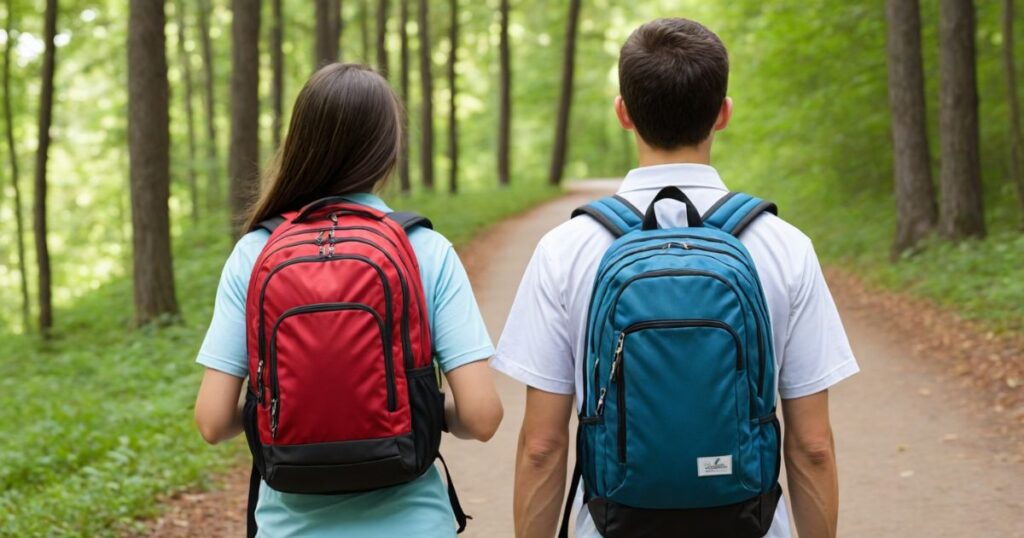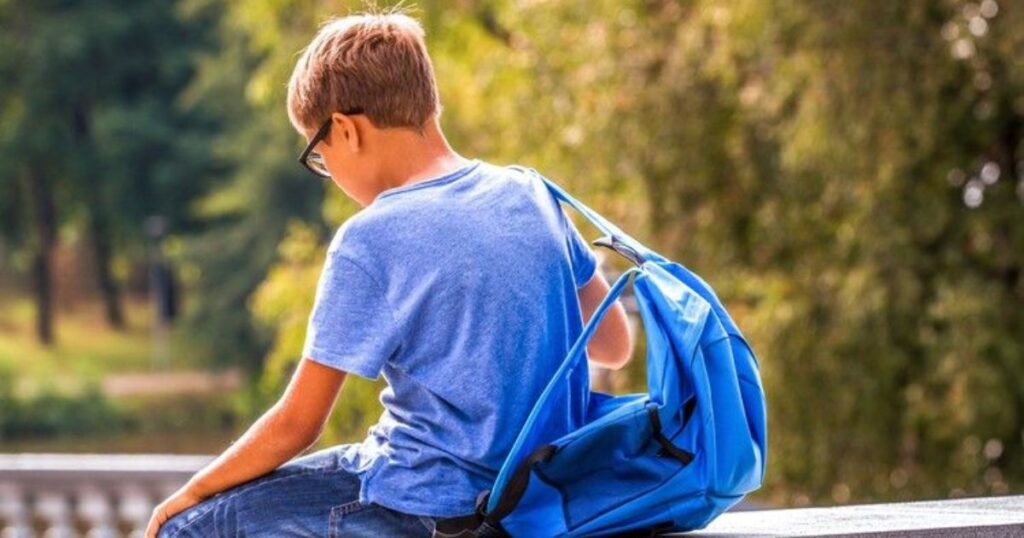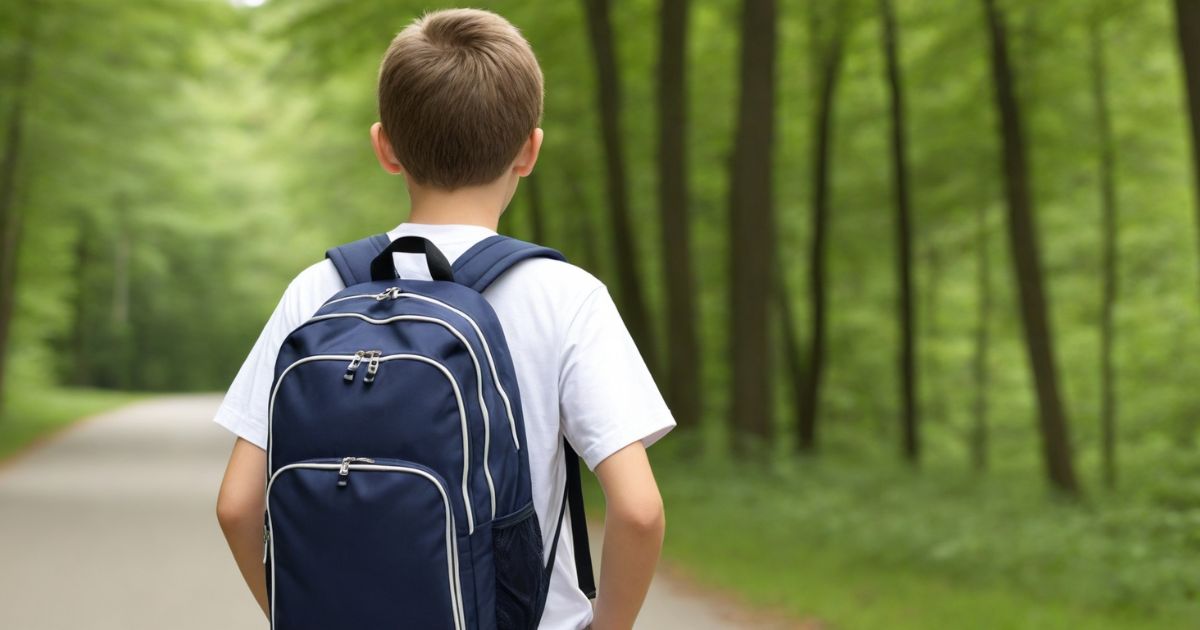Heavy backpacks can worsen scoliosis in kids and teens. Carrying too much weight can hurt their spine and make it worse. Heavy backpacks can hurt kids’ backs and worsen scoliosis. Find out how to keep their backs safe.
Heavy backpacks can make scoliosis in kids and teens worse. Carrying too much weight puts extra stress on their backs and can lead to more pain and problems.
Understanding Scoliosis in Children and Teens
Scoliosis is when a child’s spine bends to the side, making it look like a “C” or “S” shape. It often starts before puberty when kids grow quickly. Scoliosis doesn’t usually cause pain, but it’s important to find it early.
As the child grows, the curve might become more visible, like one shoulder being higher than the other. Regular doctor visits can help spot scoliosis early, making it easier to treat.
The exact cause of scoliosis is often unknown, but it sometimes runs in families. Treatment depends on how bad the curve is and how old the child is. Some children may only need regular check-ups, while others might need to wear a brace or have surgery.
The goal of treatment is to stop the curve from getting worse and help the child stay active and healthy. Early care can make a big difference in a child’s life.
Impact of Heavy Backpacks on Spinal Health

Carrying heavy backpacks can hurt your spine, especially for kids and teenagers. When a backpack is too heavy, it makes you lean forward, which puts extra pressure on your back. This can cause bad posture and back pain.
Over time, the muscles in your back can get tired and sore. To avoid these problems, it’s important to choose a backpack that isn’t too heavy and fits well.
Wearing a backpack the wrong way can make things worse. If the straps are too loose, the weight doesn’t spread evenly, which puts more stress on your spine.
Carrying a backpack on just one shoulder can also make your spine curve in a bad way. To keep your back healthy, always wear your backpack with both straps and try to keep it as light as possible.
How Excess Weight Worsens Scoliosis
Extra weight can make scoliosis, a condition where the spine curves sideways, worse. When you carry extra pounds, it puts more pressure on your spine. This extra stress can make the curve in your spine more noticeable and cause more pain.
Over time, the spine might struggle more to support your body, making the curve worse. This can make it harder to do daily tasks and, in severe cases, affect your breathing.
Also, extra weight can limit how much you move. Moving and exercising are important for keeping scoliosis under control. When you are overweight, it can be harder to stay active.
This can weaken the muscles that support your spine, making scoliosis progress faster. Keeping a healthy weight helps manage scoliosis better and can make everyday life easier.
Signs Your Child’s Backpack Might Be Too Heavy

A heavy backpack can cause discomfort and pain for your child. It’s important to recognize if their backpack is too heavy to avoid potential health issues.
- Complaints of Pain: Your child may say their back or shoulders hurt.
- Leaning Forward: They might lean forward or hunch over while walking.
- Red Marks: Look for red marks or bruises on their shoulders from the straps.
- Difficulty Carrying: They struggle or have trouble carrying their backpack.
- Weight Check: The backpack should not be more than 10-15% of their body weight.
- Regular Adjustment: Regularly check and adjust the backpack’s contents and fit.
Tips for Preventing Scoliosis with Proper Backpack Use
Using your backpack correctly can help prevent scoliosis, which is a condition where your spine curves sideways. Here are some easy tips to keep in mind:
- Choose the Right Size: Make sure your backpack fits your body. It should sit comfortably on your back and not hang too low.
- Adjust the Straps: Set the straps so the backpack is snug but not tight. This helps spread the weight evenly across your back.
- Limit the Weight: Try to carry no more than 10-15% of your body weight. Carrying too much can put extra strain on your spine.
- Use Both Straps: Always wear both shoulder straps to balance the weight. Avoid using just one strap for long periods.
- Switch Shoulders: If you need to, switch shoulders frequently to prevent uneven pressure.
- Pack Smart: Only bring what you need and keep heavier items close to your back. This helps you stay balanced and keeps your posture straight.
Choosing the Right Backpack to Support Spinal Health

When picking a backpack, make sure it supports your back. Look for one with padded shoulder straps that spread the weight evenly. A good backpack should also have a padded hip belt to help carry some of the load.
Adjustable straps are important so you can fit the backpack to your body size. Multiple compartments help organize your things and keep the weight balanced.
Choose a backpack that fits your body and is not too big or small. The back part of the backpack should be padded and curved to match your spine.
Avoid backpacks with just one strap or those that are too heavy. These may cause additional strain on your back. Picking the right backpack helps keep your spine healthy.
FAQ,s
How can a heavy backpack affect scoliosis?
A heavy backpack can make scoliosis worse by putting extra strain on the spine. This added weight can cause the spine to curve more or make existing curves more noticeable.
What is scoliosis?
Scoliosis is an abnormal curvature of the spine. It often starts in childhood or teenage years and can cause back pain or uneven shoulders.
How heavy should a child’s backpack be?
A child’s backpack should be no heavier than 10-15% of their body weight. Keeping it within this limit helps reduce strain on the back and spine.
What can parents do to help?
Parents can help by ensuring their child’s backpack is properly fitted and not too heavy. They should also encourage their child to use both shoulder straps and avoid carrying unnecessary items.
Conclusion
Heavy backpacks can make scoliosis worse in kids and teens by adding extra pressure on their spines. This can make the spine curve more or make existing curves worse. To help prevent this, keep the backpack weight to 10-15% of the child’s body weight.
Make sure the backpack fits well and use both shoulder straps. Regularly check the backpack’s weight and fit. Using a backpack correctly helps keep the spine healthy and avoids pain.











